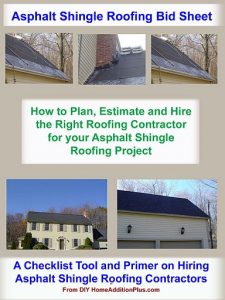Roofing Nail Gun Types and What to Look for When Buying a Roofing Nail Gun
By Mark J. Donovan
|
|
When it comes to roofing a home today, virtually all roofing contractors use roofing nail guns. Roofing nail guns simply do a better and faster job than nailing shingles down by hand. If you are a do it yourself person and have a small roofing project then hammer and nail may be adequate. If, however, you have a large roofing project that you’re attempting to tackle on your own plan on buying or renting a roofing nail gun.
Pre the roofing nail gun era, most of the time spent shingling a roof was hammering in all of the roofing nails. Keep in mind most shingle manufacturers recommend 3 to 6 nails per shingle. |
Multiply that by the installation of 1,000 to 2,000 shingles, which is commonly found on the average roof, and you can easily see the advantage of the roofing nail gun. With a roofing nail gun only a fraction of a second is required to shoot in a nail, whereas hammering a roofing nail takes a couple of seconds at least. In addition to the shear amount of time saved using a roofing nail gun, the wear and tear on the human body, particularly the forearm and back, is dramatically reduced.
| There are several roofing nail gun types that you can choose from. The spring loaded roofing nail gun, as its name suggests, uses a very high tensile strength spring to fire roofing nails into the shingle and roof sheathing. It is fairly inexpensive, and requires electricity to help pull back the firing spring.
Overall, spring loaded roofing nail guns do a fairly good job and are quite reliable, however they don’t offer the same driving force as other roofing nail gun types. Solenoid roofing nails guns operate similarly and with the same power performance as the spring loaded roofing nail gun. |
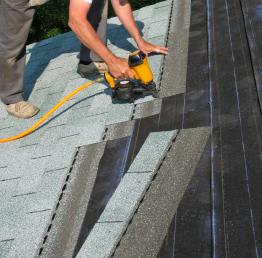 |
Their driving force is based upon reversing the magnetic polarity on a piston that shoots the roofing nail into the shingle and roof sheathing.
The combustion roofing nail gun offers a step up in driving force performance compared to the solenoid and spring loaded roofing nail guns. The combustion roofing nail gun operates off of a motor that drivers the nailing piston. The down side of this type of roofing nail gun is that it outputs exhaust gases and requires more maintenance due to more moveable parts.
The coil based roofing nail gun allows for large nail heads which is an important feature when it comes to nailing roofing shingles. Finally, look for a roofing nail gun that can provide a strong driving force but at the same time is light weight.
For more help on Shingling Your Home’s Roof, see HomeAdditionPlus.com’s Asphalt Shingle Roofing Bid Sheet. The Asphalt Shingle Roofing Bid Sheet will help to ensure that your roof won’t end up with a blue tarp over it and a dumpster sitting in your yard for weeks as you wait for the roofing contractor to come back and finish roofing your home.
Asphalt Shingle Roofing Cost Estimator
Related Roofing Information
- Selecting the Right Asphalt Roofing Shingle for your House
- Tying in a New Addition’s Roof to the Existing House
- How-to Guide to Hiring the Right Roofing Contractor
Additional Roofing Resources from Amazon.com
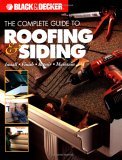 |
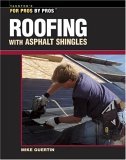 |
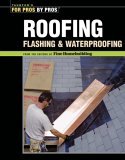 |
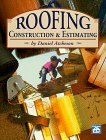 |
Roofing Price Quotes For FREE, No Obligation!
Fill out our 3-5 minute quick and easy form, and receive a free price quote on roofing from one of our prescreened and licensed roofing contractors. This process is free and there is no obligation to continue once you receive your roofing price estimate.

